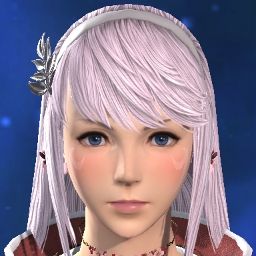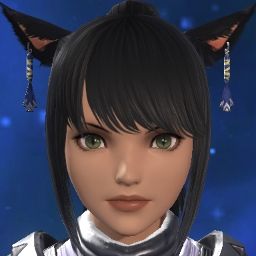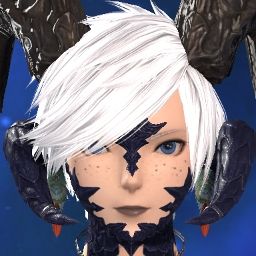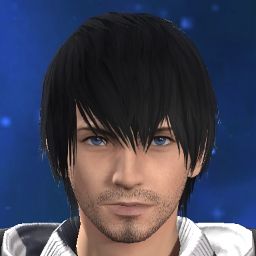Thoughts on story:
So, having played through the MSQ, I can now collect my thoughts on the matter. There was some things which played out as I expected, some which did but where the manifestation of the concrete details differed by quite a bit and others where I was completely blindsided.
On the Ascians –
It’s no secret they are my favourite characters in the game, as someone who is drawn to the dark sorcerer archetype, and it does remind me how much I wish you could pick your side in the game... I had long held to the view that they were simply beholden to views that were irreconcilable with our characters’, but not necessarily evil, as a result of their duty to Zodiark and very nature differing. Seems that their nature is indeed fundamentally different to ours (with the exception perhaps of the WoL/D), and as became clearer when the trailer emerged, they were the ancient peoples of the planet, who have lived long enough to remember how things once were and what they once were. We know from Emet-Selch that they do hold to a view that the fragmented lives that now exist are not truly “lives”, that they resulted from an act which should not have occurred, and that the fascination of some of them with the Warrior of Light relates to this brave soul rising above what they would deem the limitations of most mortals (something which is explained later…)
Their society is interesting, and befitting the natures of such beings freely endowed with as much aether as they possessed, and their ability to bring “concepts” into creation. They valued debate but placed some constraints on creation, and had a concern for expressions of disparity in their attire, so we can see a clear communalist bent here. We see a vision here not too different from something like Plato’s Republic, however More’s Utopia seems to be the more apposite point of reference, with the specific names being used as well as the invocation of some manner society organised on idealistic lines – I suspect there’s a bit of playful irony by the writers here, since Hythlodaeus, far from dispensing nonsense as his name means, identifies precisely what you are, and the rather aptly named Akadaemia Anyder. I’d find such a society stifling, truth be told, but again it does fit their natures, given their natural power of creation. What stands out is that they would freely sacrifice their lives to save and restore their world, and on a grand scale. Then, the Ascian masks maybe being a throwback to how their faces once looked in ancient times.
As an aside, I wonder, in turn, how much of Sharlayan has been inspired by the Amaurotine civilisation. We see similarities in their naming conventions for their buildings, in their style of government and their great facility with magic. Mayhap they were guided by an Ascian hand, like the Empire?
Then you have the matter of their names being offices (the Bureau of the Architect, the Hall of Rhetoric etc), and the relation in which the Paragons of the Source stand to the Overlords of the other Shards – who were fragmented in the process of the Sundering, but who can be restored to their position by a Paragon of the Source, with those who originally filled the role preferred for their connection to Zodiark. I had thought this was a case of Elidibus seeking out those with the Echo to keep their ranks replenished, and perhaps it yet is… perhaps that is how they discover potential Overlords. Mayhap he will now need to do this. The execution of the city was fantastic, and all this and the dungeons and trial blended elements from other FFs, like IV, VII, IX and X.
Given how much they sacrificed to both save and restore their world, to see what was meant to be a safety check born out of their disagreements, turn into a menace that destroyed the very god who saved them and disrupted their plans to bring back their fallen, who were given unto him, their anger and hatred of Hydaelyn and all that came with her makes much more sense. The parallels in Lahabrea’s speech and Elidibus’s were not driven by an imbalance of light in the moment, as I had thought, but at the very core of the planet’s existence. It also explains the sensation of dread Lahabrea felt when the Ascian Prime fusion ended. Although Emet-Selch may be weaving a lie… I genuinely doubt it now, given the lengths he went to, and this gives me a more compelling motivation on their part than mere villainy. They plainly do not see mortal lives as equivalent to their own and see the result of Hydaelyn’s actions as not presenting a good reason for them to stop – and I can see why.
I was also wrong about Emet-Selch’s motivations. I think he proved to be the most sympathetic Ascian of them all thus far and possibly my favourite character this expansion, and he reprised the role I had wanted for Elidibus, even if in the end he must remain our enemy. He was dealt with earlier in the expansion than I expected. All the same, I got what I wanted in terms of finally getting more out of the Ascians than cryptic one liners. I had expected some overtures into the nature of the Ascians, but not to this degree. That they were by far more advanced than the Allagans, and that they were all fonts of mana... and Emet-Selch got one of the best fights in the game to date. Theodric pointed out to me that the Amaurotine discussing the concept he had in mind for automations could be a tie in with the Nier raid, and I think it's a good shout, as it's one advanced civilisation it could tie in with.
The crisis that gripped their world appears to have been rooted in their power of creation, as emotions such as fear took grip. I wonder if outwith the confines of Amaurot, some were not as diligent in warding off its misuse. The Voidsent-like appearance of these beings lends some credence to their connection to “negative” emotions and coupled with a people who could create through imagination, given that he was merely showing you an image of them, one can imagine the threat they posed. Still, what caused this catastrophe to arise, that required such sacrifice? That’s a mystery, and one which seems to have eluded even the Ascians, especially based on how these monstrosities were described as beginning with a cacophony beneath the earth and able of wresting from them their creation magics, and spreading from across the seas - we saw how this manifested in the case of the second boss in Amaurot. So it does seem like they were inexplicable even to them and I think there's strong hints at some manner of parasite here, although how it arose (maybe by accident, e.g. through the collective energy of their dreams or some such? dormant parasites? alien?) is unclear. I also must wonder if they have some kinship to the monstrosity known as the High Seraph.
Their goal seems to restore the Source back to how it once was, and with it, their people, and their god – so there is a lot more at stake here for them and, as Ardbert picked up on, it is perhaps this sense of eternal solitude, as well as their longing for what once was, which drives them so fiercely. What I most liked about Emet-Selch is both his ability to stand back and observe when it suits him, and then go in for the kill when the timing is right, even having one of his own allow the heroes to defeat them to tilt the world into the requisite state to be rejoined.
It confirms something I had thought about their ability to manifest in their hosts, but not quite how I had expected – body swapping too much can take a toll on them, presumably why Lahabrea was not prepared to rise to the heights of power Emet-Selch did, and why Emet-Selch was “resting” in the first place. His initial form must have been the heights an Overlord like him can rise to. The form in the second part of the fight appeared to be him taking on a Primal form, spurred by the collective faith of the shades of his people as well as the prayers of the remaining Overlords. There is also the similarity of the symbol of Zodiark from XII, upside down, and also the earlier form wielding Zodiark's statue as a scepter. I really loved it conceptually, with the ancients and other Ascians imbuing him with their might.
Overall, I think there were strong parallels in their story and that of the people of the First. Though they laboured to rejoin the world, it is ultimately to restore it to how it was meant to be - restore the natural laws to it - in their eyes. And though their story is relatable, it is unfortunately one where no accord can be reached. Much like with how Nidhogg’s brood could not be reasoned out of their hatred for man, for things due to their prolonged lifespans they saw as no different to an act of aggression against them in the here and now, their motives cannot be reconciled with ours, so it is a conflict of wills.
I still wonder who, then, proposed summoning Hydaelyn. They say it was a rift amongst their people, according to Hythlodaeus. I think a possibility is that it was the ancient you, but having abstained from summoning one god, and then the two fighting to the death, it appears to have been a monumentally bad idea, that fractured the world given the power she was endowed with when summoned and left this whole tragic mess, and which now is shrouded in secrecy in most minds. Nonetheless, there may have been good reason, tied into the origins of this crisis facing the star.
Either way, whilst the Ascians did not help themselves with their secrecy, and their goals still remain in fundamental opposition with our own characters’ very existence, but I think on its face their story is a tragic and relatable one. As can be seen, their motivations and methods differ by quite a bit and their opposition to us is down to irreconcilable aims. I can respect that.
I’m eager to see what Elidibus has planned. With both Lahabrea and Emet-Selch gone, he is the last of his kind and therefore Zodiark’s last hope. It’s interesting that he referred to Zenos overpowering him, even though by Zenos’s account they never came to arms – I am guessing he is referring to the Resonance and thus a contest of wills. Zenos’s connection to his body is probably too strong to break in the presence of his will; there may be something to this Resonance that makes it compete even with the strongest of Echoes, probably as a result of how it originated. Given his ambitions, he may yet prove useful to Elidibus. Acknowledging the advantage now afforded to Hydaelyn, he resolves to mire you on the First and meet you with the Warriors of Light, given you are the Warrior of Darkness. Eager to see what this means in practice. We now know there's other fragments of the WoL out there, but Elidibus doesn't - not unless he deduced it somehow himself, or was able to gain knowledge of what Emet-Selch saw to his huge surprise. Yet what if he has figured this out? I wonder if this is what he means. As with Emet-Selch, he does not seem pleased at all about the prospect of his people fading, even as he jests at his own title with how the course of events has become harder for him to control. Will he come to find out about G'raha's powers and seek to exploit that to make use of the alternative timeline to bring back Zodiark? It'd be fraught with logical difficulties but it's one way Zodiark could be revived without the Rejoining necessarily occurring in this timeline. Still hard to wrap your head around it but doesn't mean they can't do it, particularly if they want the other current timeline Shards preserved... which would create the avenue for Zenos to hijack him later.
Lastly, again on the point of mythological/literary references, I found the Chthonic Riddle pretty cool, since with the mythological Sphinx’s death upon the answer to her riddle, you got the transition to the Olympian gods – exactly what Hades is. Then you have references like Titanomachy and “Polydegmon’s Purgation”, with the latter meaning “the one who receives many”, associated with Hades, and a fitting reference given Emet-Selch’s ascendant form. Overall, the expansion has been replete with references to ancient Greek nomenclature, such as the Lightwardens such as Philia (friendship) and Storge (affection), and the inspiration here seems to have been the C S Lewis’s Four Loves, which makes sense given the prism through which they’re interpreting the concepts.
On the Warrior of Light –
The discussion with Hythlodaeus was pretty illuminating. Plus, given that we’re told that there was an unprecedented departure from office of one of the Convocation (tying in with Hythlodaeus’s remark of 13, then 14), presumably in abstinence following the summoning of this god, I wonder if this “him” (“her” if you play a female) Hythlodaeus was referring to is this departed member of the Convocation. You are shown to be one of these Ancients when confronting Emet-Selch, and so it fits. Albeit with parts of you fragmented (Ardbert being one such fragment), the reason you can stand against the Overlords is in part because you are cut of the same cloth, albeit still not "whole" yet... and maybe we have our answer as to Thordan's cryptic remark after you defeat him. I am guessing all the Rejoinings thus far have reunited you with other fragments of yourself, barring maybe the XIIIth. Unukalhai would seem like a plausible candidate in its case, albeit he was but a potential WoL, so we'll see.
It’s a bit clearer to me now how Eden will manifest your imaginations.
The assumption of the title of Warrior of Darkness (and I guess villains) appears to have been primarily allegorical in nature, with you fulfilling the vision of the hero the people of the First had been waiting for, rather than any strict relation to Darkness as such. I do find it a little too convenient, how the Blessing of Light figured into being able to defeat the Lightwardens and by extension Emet-Selch, and I’d have liked to see a genuine turn to Darkness, but at least it made sense from a narrative perspective.
On the Crystals -
What does this all mean about Hydaelyn? I continue to think there is a bit more to this story, but not in the sense that the Ascians are lying, as I think they have now laid bare enough of their history to be taken at their word. That the Ascians are tempered by Zodiark, and bear his darkness, suggests much the same could occur with Hydaelyn. Perhaps the strength of their Echo, and ours, prevents tempering in the usual sense and instead results in a manner of aspecting. I don’t trust her account of what happened, and I believe she may be lying both for the “greater good” and also to preserve the status quo she brought about. That her power lies in enervation, and that Zodiark, the Source and all on it were thus fragmented now makes greater sense. It was no accident and inheres in the nature of her power – and it is quite logical that a failsafe would come with this feature “installed”. All seems quite compelling, to me.
Whilst there may have been reasons as to why a failsafe was deemed necessary for Zodiark, this appears to have been motivated out of concerns about what would happen if he went out of control… and instead, it appears to have led to endless fighting, with her triumphing. Why did she not explain it this way? Whilst the Ascians may be omitting some details on the topic, and I still leave it an open possibility that Zodiark’s might was abused in some way, it could resolve to the unpredictable nature of Primals. If this expansion has taught us anything, it is that Light is not inherently good and is a power that can be abused and corrupted.
So why would she not need a failsafe, too? Something is missing here and I won’t assume that she is “good” without further evidence. Neither will I assume Zodiark is “evil”. If anything, I now understand why the Ascians place such importance upon him. All the sacrifice that went into his summoning and the salvation he offered of their world. Also, why they are so invested in the restoration of the world as it was before the Sundering. I also consider Midgardsormr’s account to be unhelpful in establishing the honesty of her words – he is an outsider who did not fully comprehend what transpired. Whilst that may make him “objective”, it also means he lacks fundamental knowledge as to what occurred beforehand. Based on Elidibus’s soliloquy, it appears Hydaelyn and her creators desired this state of ignorance, of what came before.
To that end, like to see further information on that – for instance something like the Convocation perhaps having become a threat as they took on the power of gods, or mayhap planned things to end this way from the outset, engineering the calamity, although of the two I rate the former as much likelier between them, as Emet-Selch's sorrow seemed genuine, and it came across as a last resort act, plus the gradual way this threat unfolded doesn't hint too strongly at such a conspiracy. With that said, I note Emet-Selch referred to himself as a “sorcerer of eld”, and interestingly when looking up “goetia”, it basically means sorcery in ancient Greek, and that term which became more seen as a pejorative during the ancient Greek “golden age” as societies organised along closer lines to that of Amaurot and religion became a more communal affair. This could be hinting at a change in the Convocation in the reverse direction but only after Zodiark had been summoned, so maybe a form of corruption that caused them to deviate from their original path. Or maybe not, and it’s just the usage of references which are linked and sound cool, and they really just do suffer from a strong urge to see their people restored. If I’m honest, I’d prefer they kept it that way rather than making this some grand conspiracy by the Convocation... and just leave it at a disagreement on methods with regard to the departing member. I wonder if the motivating factor wasn't perhaps a distaste for the ancients' ready propensity to self-sacrifice when circumstances called for it, as we can see with the final boss in Akadaemia Anyder. That said, summoning a Primal that would not only shatter Zodiark but their own world and people, and then bury all memory of this, is a drastic move... much as I would prefer they avoided shoehorning this down some "corruption" narrative, it seems like a clear pathway to justify Hydaelyn's summoning and secrecy, i.e. a "greater good" narrative, unfortunate as I'd consider that to be.
Hydaelyn is as cryptic as the Ascians, in some regards.
It’s at least now clear that the world can persist without a will inside the star, given that it was formed from the aether of the ancients. Yet I imagine having it makes it less likely that threats like the calamity the ancients faced were to recur, especially since its origin is still not entirely clear to us so we're left speculating. Let us see how Zenos’s intentions alter that state of affairs and what more we learn of the two Crystals.
On the elements –
The shift in understanding on how Umbral and Astral aspecting work isn’t too huge a revelation, but it helps me understand why Voidsent and Sin Eaters aren’t ultimately the same thing. Light and Dark corrupt in a different way. I imagine if Light results in stasis, Dark corrupts the aether to a state of over-activity. Thus why, barring two exceptional beings (Innocence and Titania), Sin Eaters lack any personality or sentience, and are closer to rabid beasts. It is also interesting how the Black Rose functions similarly to Umbral aspecting. Although this could be due to how much longer Voidsent have been around, I think the real differentiator here is the difference in the two forces' innate nature.
On the First –
I like how they portrayed the shift in perspective toward dark and light an excess of the latter can cause. How the dark was seen as a form of shelter, paradise and salvation. I was also pleased with how Eulmore was handled. I did expect the gilded cage narrative for it, but the true story behind its ruler, and Emet-Selch’s involvement, and the way in which the city simply ceded to its fate and sought to take the world with it, show how even the Light can be expressed in a doomsday cult, of a sort. I think the defeat of the Lightwardens made the character’s role very impactful, and satisfying. Vauthry was pretty tragic, for behind his oafish, self-centered veneer, he was both the pawn of his father’s ambitions, and of course, Emet-Selch. Being part sin eater no doubt imbued him with a great sense of self-righteousness.
Plus, seeing how the world’s inhabitants adjusted to the change of circumstances was a case of good world building. I still prefer the distinctive cultures of the Source to the melting pot the First had to become, of necessity, but it presents an interesting contrast. Then, you have familiar sights, like the Amaljaa, only the ones we see are not aggressive or warlike. Mayhap due to the pressing circumstances involved. Additionally, a familiar Primal like Bismarck reprising a different role in this world. Possibly a creature alike to the one on the Source the Primal was inspired by, since it exerts no inherent aetheric drain on the land that we can tell?
I was also really glad we got to see more of Ardbert, and how with the best of intentions and a noble personality he still got to the point where he became apathetic to all the violence required to carry out his role, and eventually when doing their best to save the world, they were vilified for doing what they thought was right, purely because they were ignorant of what the true state of affairs was. I enjoyed how original Minfilia’s character grew, and how she intended for Ardbert to share your burden, lest it overwhelm you. No doubt she could discern your connection.
Getting to visit elements of this world, lost to the Source due to the Calamities it has endured, like the cave paintings, or Amaurot’s ruins, and how differently life on it manifested to the Source, does make me hunger somewhat to see the other Reflections, but I doubt we’ll have time to do much of that, especially with more of the Source unexplored, plus worlds outside ours altogether. Maybe if there’s a good plot reason to allow for it.
On the Empire –
Although I am saddened by Varis’s death, given how much I enjoyed the character, I think this was fitting, because for him to remain in the story would require him to become a villain, or be corrupted into one. The situation he was in weighed heavily upon him and he wasn’t really going to get out of it by sheer force of arms. Although Varis was a harsh man, he was honourable in my view and firmly believed in the notion that man must lead his destiny, and also concerned with the Empire’s wellbeing above all else. Gaius, by all appearances, was grieved greatly by his death. If the Empire can be salvaged from the chaos now gripping it, I can see Gaius finally becoming the ruler he wished to, and taking the crown, possibly reforming it so the Senate regains some of its lost power and relinquishing its foreign territories. But much later on.
At the same time, I am glad Zenos was not cheapened with some soppy redemption story, and that he was true to his word. I saw parallels with Sephiroth in his approach and lines, and although it’s not necessarily Zodiark he seeks to merge with, I had thought he would seek to subjugate the Elder Primals given what he did to Shinryu – again, there are further parallels to Sephiroth, amongst other FF characters. I did not think he’d join Gaius and Estinien as well as ridding of Elidibus, Varis and Emet-Selch because, in spite of doubts as to whether he could truly accomplish it with the Overlords, it would just make everything too easy. As things stand, both Elidibus and Zenos remain as antagonists, and an Empire in a state of chaos is dangerous in and of itself. I still rate Elidibus as by far the more interesting of the two, in terms of what he can offer regarding his motives, and so on… and whether we’ll get to see another god-like Ascian form.
Originally I thought Emet-Selch might be the one to attempt a merger with their god, but with the knowledge that Zenos has done this before, and given his own ego on overdrive and desire for sport, this is exactly how I expected him to react to the truth of the world, were Elidibus to reveal it to him, as he did, if only having been overheard. Whilst Zenos may have had a childhood much like Vauthry’s, we can but speculate, and in the end, like Vauthry, he still has his own will, so he makes for a good antagonist. I found it interesting how quickly Elidibus uncovered his identity, but given that he sees his Echo as borrowed, perhaps Emet-Selch’s dark-aspected aether did not get passed down the family. Either that, or the Resonance is potent enough to mask a diluted Ascian heritage.
I remain disenchanted with Zenos himself, voice acting aside, but I can only wonder how close he will come to his aim of merging with the planet. This is exactly what I thought he would do once he found out about the nature of it. At least in terms of the raw power it’d confer upon him, it’d make him a suitable threat either this or next expansion and another fun boss fight… hopefully along with a bit of character development.
On the dungeons -
The one which stuck with me the most was Mt Gulg, for that beautiful Olympian styled design it had, as well as the cube themed boss and Forgiven Obscenity. Vauthry’s change into Innocence, as well as the scenery of the Crown of the Immaculate rank it amongst my favourite trials. Dohn Mheg did a great job of conveying the whimsical Fae demeanour. The fall of Amaurot was awesome, in its cinematic execution and in visually relaying what befell the ancient civilisation. Although I’ve commented on Emet-Selch at some length, that fight with him was superb, and I was pleased that it took no small amount of sacrifice to overcome him, taking more and more of you, the Scions and your summoned allies, beyond the white auracite, beyond even the light stored up in you – and in the end, he bade you to remember him and his people, suggesting he was at least earnest in his drive. He truly believed in and fought hard for his vision, for his nigh forlorn and forgotten people. The music build up, the visuals and the cutscenes and integration of your character's pose at the end with the WoD in the cinematic were masterfully epic.
Akadaemia Anyder had some interesting morsels, in that it seems the ancients were at that time perfecting the creation magicks they would use to summon Zodiark later on, as you can see with his statue besides those of various animals. It's interesting how freely they'd give their lives away if necessary, as was the case in summoning Quatzecoatl. Again, it repeats similar comments on the "Final Days", but we're still clueless as to what the origin was that led to this spontaneous creation of nightmares, i.e. was it some manner of parasite, within the star or from elsewhere, that could direct their imaginations to nightmarish creations, or was it something else entirely? They're clearly malformed beings like Voidsent. And of course the academic at the end, not realising they're just phantoms, thinks everything is still in hand! Meanwhile, the Twinning gave some insight into how the future's Ironworks was researching the Crystal Tower to gain insights into interdimensional and time travel, hoping to gain insights from Omega, Xande's gate and Primals you fought (presumably Alexander), and then stumbled on G'raha, with his unique ability to control the Tower.
On the Scions –
I enjoyed Thancred the most, with his fluctuating emotions and suppressed rage – mostly directed to himself and his longing to be reunited with Minfilia, out of a sense of duty to her and also love, but also much pain in the realisation that in order for Ryne to truly be herself and fulfil her potential, he would have to lose Minfilia for good. He is one brave and tenacious fella. Urianger and Y’shtola both shone through again, and I enjoyed the depth they provided to the story as it progressed, with their capability to give more in-depth explanations of what is occurring as well as acting as the group’s spiritual mother and father.
The Master Matoya thing worked out differently to what almost anyone expected, but it was in the end a matter of a titular change – just not in the sense some people had speculated it’d be. All the same, I liked the changes Y’shtola underwent, as the group’s spiritual “mother”. Although she is direct, it is out of concern for her fellows. Urianger, too, has come through as a character with a lot of gravitas in terms of how much wisdom he possesses, in addition to his intellectual prowess. Alphinaud showed a lot of growth again, in how he handled Eulmore, and I liked how he had hoped to work with Vauthry and find common cause, until he realised the man could not be reasoned with. Ryne was also better than I had expected she would be and at least this was not Minfilia 2.0. I still struggle to get on with Alisaie’s character, but I like the determination she showed.
The Exarch turned out to be G’raha, as many (particularly Iscah) suspected. His merger with the Crystal Tower, and symbiosis with it, and the fact that he brought it from another timeline (in which your legend survived and served as the unbroken thread prompting them to action, partly due to Edmont’s memoirs) were handled in a better manner than I had expected, as was the divergent passage of time between worlds, allowing us to see glimpses into what manner of mad science might occur there. Whilst there was no connection between Zodiark and the Exarch, I still wonder if it is true that it is the ejection point of Zodiark from the star, thus the crystallised aether forming it. It looks like there’s a good chance that it is, but possibly not mirrored on the Reflections. G’raha’s remarks as to whether the future he came from somehow persists as its own (given his remaining presence), detached timeline, or whether he is now part of this new history intrigues me, as does whether they will pursue this angle further, since as mentioned in my comments on Elidibus, it could be an opening for reviving Zodiark without destroying the other Shards in this timeline. I'm still leery of such plotlines but for the time being it is serviceable. Also, how will he co-exist with Source timeline G'raha? Will they merge?
All this leaves one to wonder, what will happen with the First longer term, for example when their passage of time is no longer synchronous? Will we find a way to rejoin these worlds, or otherwise a method to connect them, and how will that affect the passage of time relative to one another? G’raha’s role in this almost compels a “yes" in regards to finding a way to bridge them, but what will happen to him if it occurs?
How was it that the Amdapori could fashion statues after Sin Eaters, when we know that the Flood, though 100 years in age, still occurred in recent time from the Source’s perspective. Perhaps they drew on the Light of somewhere else, or experimented by their own hand with the effects of saturating beings with light-aspected aether.
Overall, this feels like a strong conclusion to multiple story threads running since ARR, and I’m eager to see where they take those which remain unresolved. I’m guessing it won’t be till 7.0 that they feel the need to move on from the Zodiark/Hydaelyn arc and with the final cinematic implying an end must come to the war between light and dark, I want to see if this will end in a balance or one side triumphing.
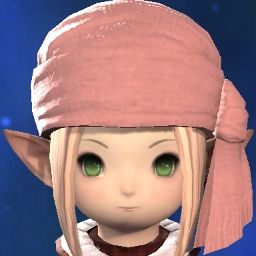
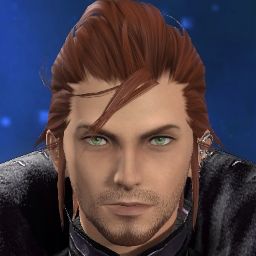


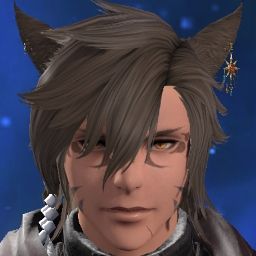
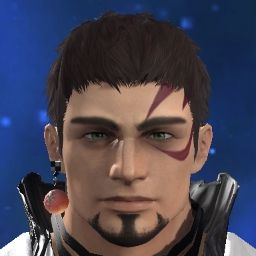




 Reply With Quote
Reply With Quote